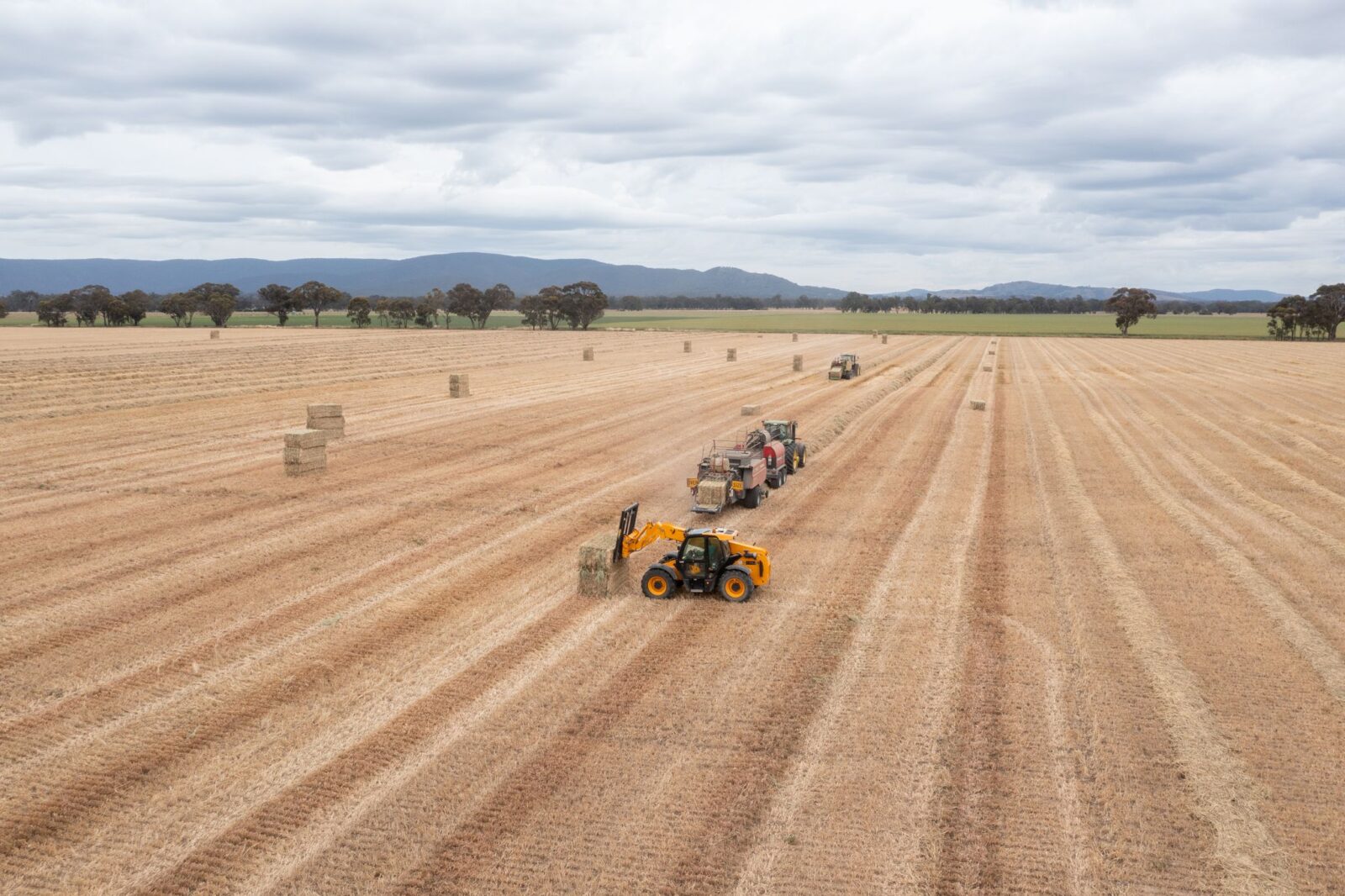Meet your future agronomists: The five Horizon Scholars getting a career head start
 EXPORT FODDER / Thursday, 30 May 2024
EXPORT FODDER / Thursday, 30 May 2024
Sensing oaten hay quality from above

Australia’s export fodder industry is set to develop an affordable drone-based assessment tool to help growers and plant breeders maximise the quality of oaten hay and secure access to important international markets which are worth millions to the industry.
The project, Dispelling value uncertainty for hay growers – application of high-throughput, low-cost phenomics to predict oaten hay quality in-crop fields, while improving oat breeding selection efficiency, is led by researchers at the Australian Plant Phenomics Facility at the University of Adelaide. It will investigate the use of low-cost sensors and cloud-based analysis to measure the quality of oaten hay, a crucial export commodity for the Australian fodder industry.
Australia’s export fodder industry has achieved year-on-year growth over the past decade, with the total volume of hay exported in 2020-2021 valued at more than $500 million. Exports are expected to double in the next three years as overseas dairy production increases, but maintaining Australia’s steady supply of high-quality oaten hay is critical to uphold the industry’s competitiveness.
Hay with higher quality (possessing a metabolizable energy of 11 MJ/kg) commands a higher price and helps enhance animal performance and milk production.
AgriFutures Australia Export Fodder Program Manager, Annie Lane, said monitoring hay quality is challenging as it can vary across paddocks and farms, and depends on environmental factors, management practices, industry demand and genetics.
“As the value of hay is usually determined on delivery to a mill, growers are making key decisions based on historical outcomes, weather patterns and risk mitigation,” Annie said.
“This project will enable growers to evaluate the relative value of their hay crops per paddock and make management decisions based on current data.”
The project aligns with priority one in the AgriFutures Export Fodder Program Strategic RD&E Plan (2021-2026), which focuses on the production of high-quality export-grade fodder. It also supports industry innovation by investigating new technologies that could be used to improve the productivity, profitability and sustainability of Australia’s export fodder industry.
Leading-edge technology on the horizon
Dr Reddy Pullanagari from the University of Adelaide is leading the research, in collaboration with InterGrain, which will run until early 2027. The project involves multidisciplinary experts who understand current research gaps and industry needs, and have worked on AgriFutures-funded projects including oaten hay breeding.
Reddy explained that the project aims to use suitable optical remote sensors that can predict hay quality at the breeding plot level and paddock scale, and develop the best algorithm to categorise hay quality according to the Australian Fodder Industry Association (AFIA) Grades.
“Currently, the quality of hay is determined by visual and sensory appearance, which is a highly unreliable and subjective approach. This leads to uncertainty in decision-making processes,” Reddy explained.
“The project aims to address this issue by testing a combination of state-of-the-art optical sensors, including hyperspectral and LiDAR sensors mounted on drones and field phenotyping instruments, to collect comprehensive information from oaten hay trials in a non-destructive way.”
Hyperspectral sensors use the electromagnetic spectrum to identify objects or materials while LiDAR (Light Detection and Ranging) sensors use pulsed light waves or lasers to support 3D modelling.
“These advanced technologies have been chosen for their potential to provide near-real-time monitoring of hay quality at the farm level, allowing for timely and informed decision-making regarding cutting and bailing hay,” Reddy explained.
“The collected spectral data will be paired with laboratory-determined hay quality measurements to develop an algorithm that can categorise hay quality according to the AFIA Grades. This simplified algorithm can be deployed at different scales, from breeding plots to paddocks, enabling farmers or agronomists to accurately assess hay quality and make necessary adjustments to improve yields and overall farm productivity.”
It is expected the sensor will be able to categorise hay quality into AFIA grades within 24 hours, therefore providing a relative value of individual hay paddocks at a given date.
Delivering value to growers and plant breeders
Reddy is confident the project will deliver accurate decision-making tools to help growers predict the value of their hay and optimise management decisions and production strategies.
“In the short term, the research will enable farmers to monitor hay quality in near-real-time, allowing them to maintain high profitability by harvesting at the right time to meet market needs,” Reddy said.
These benefits will flow to millers and exporters by providing ‘early signals’ around the intrinsic quality of incoming hay, pending weather damage. Millers and exporters will then be able to lock in key high value markets earlier and provide assurance of supply.
“In the long term, the technology will also be used in breeding trials to develop oaten hay varieties with high yield and quality, and aid in genetic selection across the Oaten Hay Breeding Program by making large scale selection of breeding lines more efficient,” Reddy said.
“The tools developed in this project will help farms adopt better strategies to maintain high-quality hay throughout the year, encourage the adoption of new varieties and further strengthen the competitiveness of the Australian export fodder industry.”
Find out more about the AgriFutures Export Fodder ProgramLatest News
-
Meet your future agronomists: The five Horizon Scholars getting a career head start WORKFORCE AND LEADERSHIP / 30.05.24
WORKFORCE AND LEADERSHIP / 30.05.24 -
New data reveals $8 billion contribution of Australia’s chicken meat industry CHICKEN MEAT / 30.05.24
CHICKEN MEAT / 30.05.24 -
AgriFutures opens Applications for 2026 Learning and Development Opportunities WORKFORCE AND LEADERSHIP / 30.05.24
WORKFORCE AND LEADERSHIP / 30.05.24 -
Unearthing a quiet giant: Australia’s rising truffle industry TRUFFLES / 30.05.24
TRUFFLES / 30.05.24






